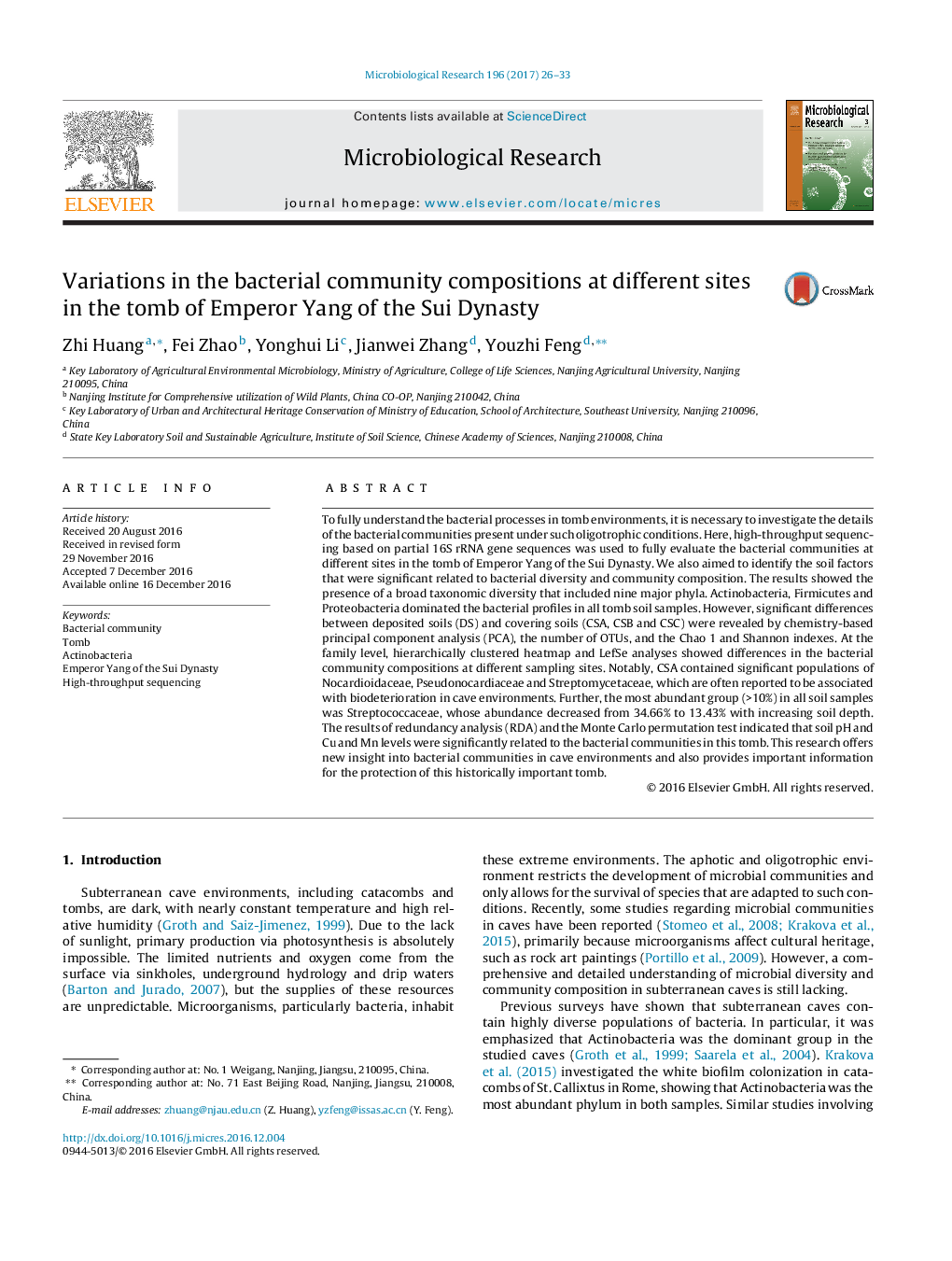| کد مقاله | کد نشریه | سال انتشار | مقاله انگلیسی | نسخه تمام متن |
|---|---|---|---|---|
| 5522564 | 1545978 | 2017 | 8 صفحه PDF | دانلود رایگان |
- Bacterial community compositions at different sites in the tomb of Emperor Yang of Sui Dynasty were investigated.
- Bacterial diversity indexes of deposited soils were significantly higher than those of other soil samples.
- Bacterial communities were significantly different among soil samples.
- Actinobacteria, Firmicutes and Proteobacteria dominated the bacterial profiles.
- Soil pH, Mn and Cu were significantly related to the bacterial community composition.
To fully understand the bacterial processes in tomb environments, it is necessary to investigate the details of the bacterial communities present under such oligotrophic conditions. Here, high-throughput sequencing based on partial 16S rRNA gene sequences was used to fully evaluate the bacterial communities at different sites in the tomb of Emperor Yang of the Sui Dynasty. We also aimed to identify the soil factors that were significant related to bacterial diversity and community composition. The results showed the presence of a broad taxonomic diversity that included nine major phyla. Actinobacteria, Firmicutes and Proteobacteria dominated the bacterial profiles in all tomb soil samples. However, significant differences between deposited soils (DS) and covering soils (CSA, CSB and CSC) were revealed by chemistry-based principal component analysis (PCA), the number of OTUs, and the Chao 1 and Shannon indexes. At the family level, hierarchically clustered heatmap and LefSe analyses showed differences in the bacterial community compositions at different sampling sites. Notably, CSA contained significant populations of Nocardioidaceae, Pseudonocardiaceae and Streptomycetaceae, which are often reported to be associated with biodeterioration in cave environments. Further, the most abundant group (>10%) in all soil samples was Streptococcaceae, whose abundance decreased from 34.66% to 13.43% with increasing soil depth. The results of redundancy analysis (RDA) and the Monte Carlo permutation test indicated that soil pH and Cu and Mn levels were significantly related to the bacterial communities in this tomb. This research offers new insight into bacterial communities in cave environments and also provides important information for the protection of this historically important tomb.
Journal: Microbiological Research - Volume 196, March 2017, Pages 26-33
